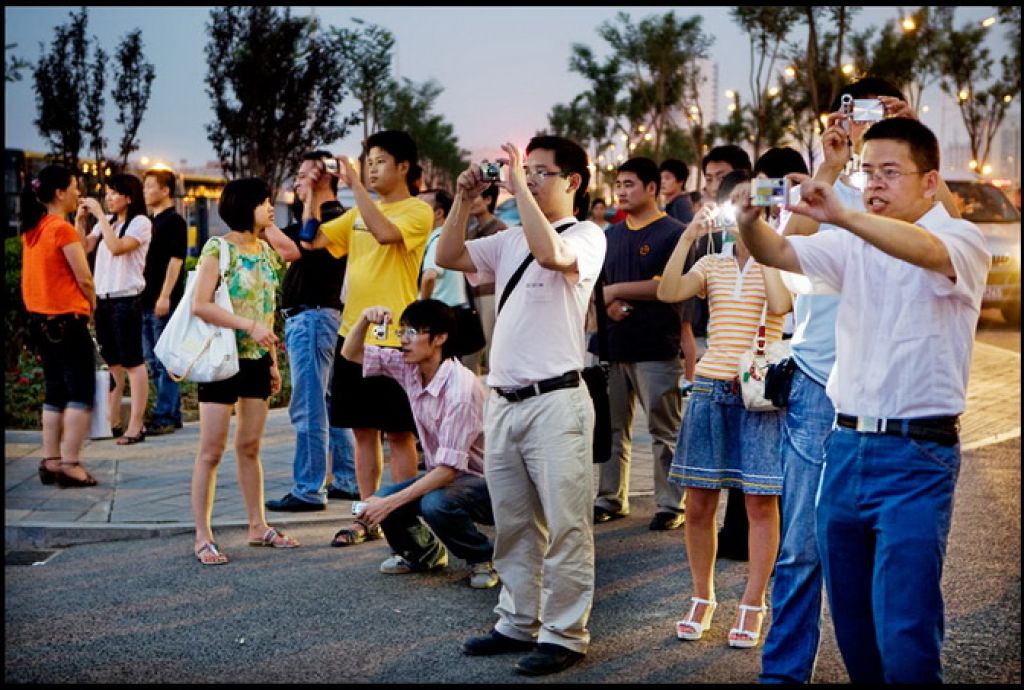Bali Tourism: The Dawn of The Chinese

Bali has become a major tourist destination since the 80s. That’s when the real boom happened. The annual 9-13% increase of tourists coming to Bali since 2009 is only a legacy to the exposure made nearly two decades ago.
That increase correlated heavily with USA Government’s lifting its travel warning back in 2008. Since 2011, however, direct flights from China have played a more important role in Bali tourism than the US’s concern over the safety of its citizen. That year marked the day when for the first time China outranked Japan as the second biggest tourist exporter to Bali after Australia.
In 2013, 57.48% of tourists came from Asia Pacific (excluding those from South East Asia region that has its own category), followed by Europe with 22.19%, South East Asia countries (ASEAN) with 12.11%, and America 4.8% respectively. The rest is shared between African and Middle Eastern countries.
Indeed, statistically, China still has a long way to go before it can dethrone Australia as number one. However, given the increasing globetrotting trend in China, and love-hate relationships Australia has with Indonesia and Bali in particular (Schapelle Corby, anyone?), this is just a matter of “When?”, instead of “How?” Please also note that in 2013 alone, the total number of Chinese tourists is only half of the tourists from European countries combined together.
What Does It Mean to Bali Tourism?
We all need to study Mandarin that’s for sure. According to CNN, no less than 30,000 Chinese tourists came to the island last Lunar New Year (Year of the Whores Horse) and injected no less than 90 Million Dollars to Bali’s economy.
According to the same report, the Indonesia tourism board is currently trying to have reached a target of 1 million Chinese tourists by the end of 2014.
Boom. That’s a potential Bali tourism boom’s Second Coming, right there.
Soon, we may hear a lot of freelance drivers speaking broken Chinese instead of English everywhere in the island. Hotels, restaurants and clubs in Bali will need to carve special plans just to cater to these deep-pocketed, big spending and big-tipping Asians’ needs. Bali will need Mandarin-speaking tour guides and language teachers more than ever.
What Does it Mean to Real Estate Business?
Given that the real estate and property business is always being an offshoot of the Bali tourism industry, everything that happens in the latter will impact the former, sooner or later.
Today, we may not see a lot of Chinese buying property in Bali. However, I can already imagine, the makeshift signs placed by local makelar on electricity poles offering land for sale, villa for sale or villa for rent will have another space that reads 土地出售, 別墅出售 and 別墅出租 respectively. Yes, the day when those big-spender realize that instead of spending their vacation in hotels, they could do it in their own villas and make money off of it (by renting it to another party for example), a fierce property hunt will begin.
Property agencies need to anticipate this market shift before it’s happening. Forget the Australians and Europeans! (Well, not completely) Here comes the Chinese!
The Big Picture
Bali tourism industry could ride this ongoing trend to help build what many believe as a lack of infrastructure distribution. The challenge is to provide a better service for everyone amid the widening cultural diversities. As a consequence, using the current tourists’ divisions: (Asians in the greater Sanur area, Westerners in the greater Kuta area) won’t suffice anymore. New tourism hubs need to be opened. Speaking of which, would you believe if I tell you that Sanur was once THE ONLY tourist hub/point of entry in Bali?
Cultural exchange, not only with locals, but fellow tourists from another cultural background can also be a great experience one could expect from having a vacation. This can be a key feature to promote Bali tourism further, beyond its natural and cultural beauty.
Of course, there’s still 50% chance that the upward trends of Chinese traveling to Bali are short-lasting. But still, doing nothing about a factor that, for example, was able to generate a staggering $4.04 billion to the Australian economy in 2013, would be a stupid thing to do.
For the Bali tourism industry, the rule of thumb is to ride the tide while it lasts, and while it’s there, make it lasts just a little bit longer.




